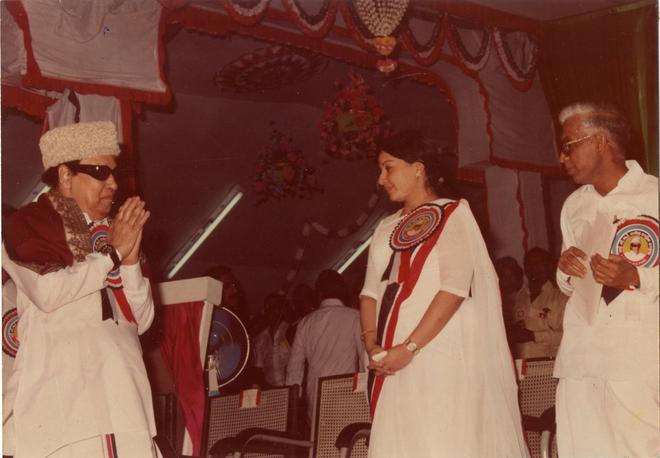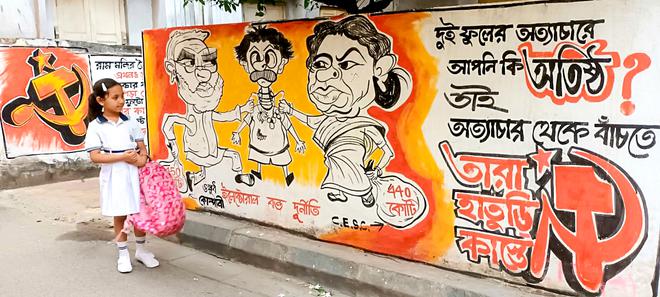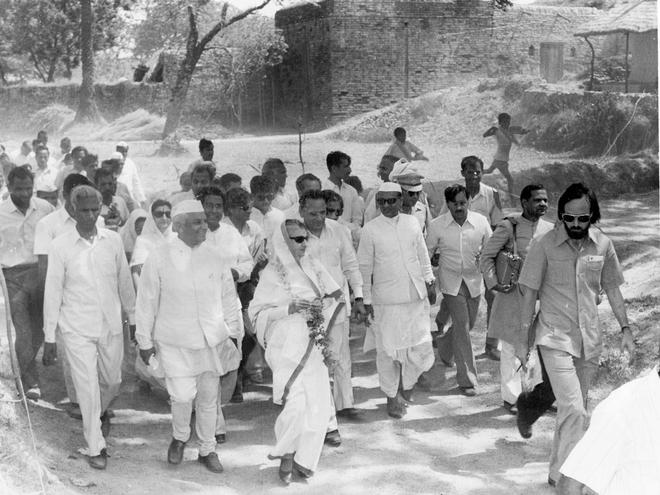Since 1952, India has had 17 general elections. The 18th is underway — unfolding in seven phases. Over the years, the country has seen days of coalition politics and of absolute majority. Through it all, the election campaign has been a great unifier. Loud, colourful, and playing to the masses, politicians use every tool at their disposal to win over voters.
Also read | 2024 India elections: Phase 1 voting LIVE - April 19
In the early 1980s, I remember N.T. Rama Rao, the founder of Telugu Desam Party, shifting his image from that of a matinee idol to a politician. He was one of the first to customise a van — his old Chevrolet, which he named Chaitanya Ratham — to canvass. A far cry from the vanity vehicles that today’s politicians use (think Rahul Gandhi’s ‘Mohabbat ki Dukaan’ Volvo bus with its hydraulic lift), it was still a star attraction. Youngsters would throng the van, as there was talk that it was customised to include the amenities of a single-room apartment.
NTR would stop beside a village pond or tube well to have his bath. Rural folks who idolised him as Lord Rama and Krishna — the roles he played on the big screen — would prostrate before him, and perform ‘arathi’. He would oblige them and hand out dry fruits as prasadam. Then he would park his van in the village square for the night. It is said to have logged 75,000 km.
Things changed, however, in the late ’90s. The Election Commission of India’s new regulations coming into effect post T.N. Seshan, in 1996, meant that the carnival atmosphere slowly began seeping out of campaigns. Today, the Great Indian Democratic Festival is much more sanitised. The action has moved to social media, with every politician and party hiring agencies to run their campaigns. The emphasis is also on road shows, with huge crowds, large convoys, and high decibel music.
Senior journalists look back at a pre-tech era when charismatic leaders, great oratory skills, and a personal touch won over voters.
Fun after 8 p.m.
A.S. Panneerselvan, former Readers’ Editor of The Hindu, recalls elections being like carnivals. “When we covered elections as young journalists, the fun would start after 8 p.m. Now, campaigns have to end at 10 p.m. Those were the days when political parties would hold musical concerts and stage plays,” he says, remembering how plays such as Parasakhti, by Tamil scholar Pavalar Balasundaram, had a strong social message (on the abuse of religion and the State’s apathy), during the 1952 elections. “I have seen plays by M.G. Ramachandran and Karunanidhi. They were creative and high-voltage, written for the campaign, and had a direct impact on voters. All that is gone now.” In the tussle between accountability and restrictions, tools such as poetry, song and musical nights have faded into oblivion.
Race for pink lips
Orators and electrifying speeches
Senior journalist Rajdeep Sardesai, who has been covering the elections since 1989, recalls a greater sense of public involvement back in the day. “We would see a lot of posters, hoardings and pamphlets being distributed. The entire country used to wear a festive look,” he says. “Once I followed George Fernandes on his campaign trail. He wooed voters with his simplicity. Wearing the traditional kurta-pyjama, he would sit with them, have tea and deliberate on local issues.”
Then there were leaders who had the ability to connect with the masses at large public meetings. Bal Thackeray and Atal Bihari Vajpayee always stood out, he says. “In one election, sometime in the mid-90s, I was covering a Shiv Sena rally at Shivaji Park in Mumbai. The moment Thackeray came on stage the atmosphere became electrifying. He mesmerised the crowd with his oratory skills and witty punchlines. Atal ji was the same.”
Larger-than-life personalities
Journalist Monideepa Banerjie recalls witnessing the draw of a personality when she covered Jayalalithaa in 1986. The actor-turned-politician was seeking re-election from Bodinayakanur, in Tamil Nadu’s Theni district. “People from the neighbouring villages would rush to get a glimpse of her. In those days, the crowds used to be smaller and the meetings simpler. There was a sense of intimacy between the leader and the people,” she says. “Now, meetings are larger and more sanitised.”

West Bengal’s graffiti walls

When voters stated their intent
Once upon a time, the response to a campaign was often a good indicator of the election trend. During her 1977 general election coverage, Neerja Chowdhury recalls, “The people in Delhi were silent. There were murmurs of ‘Let the election come and we will teach Ms. Indira Gandhi a lesson’.”
A meeting in western Uttar Pradesh comes to mind. “Actor Dilip Kumar had come to campaign for her. The moment his speech was over, and Ms. Gandhi came out to speak, we saw the crowd leaving. It was a clear indicator; even she sensed it,” Chowdhury says. This is not the case today, with orchestrated crowds. The spontaneity is missing.

Another memory of strong crowd reactions is from V.P. Singh’s campaign. “In 1989, Singh had come out of Rajiv Gandhi’s Congress government, which had 414 seats in the Lok Sabha. He took on its might by assimilating all the non-Congress parties to forge the National Front. People across Bihar and U.P. would stand on the road, even in the dead of the night, with lamps to get a glimpse of him. They wanted change and it was evident in the election air.”







